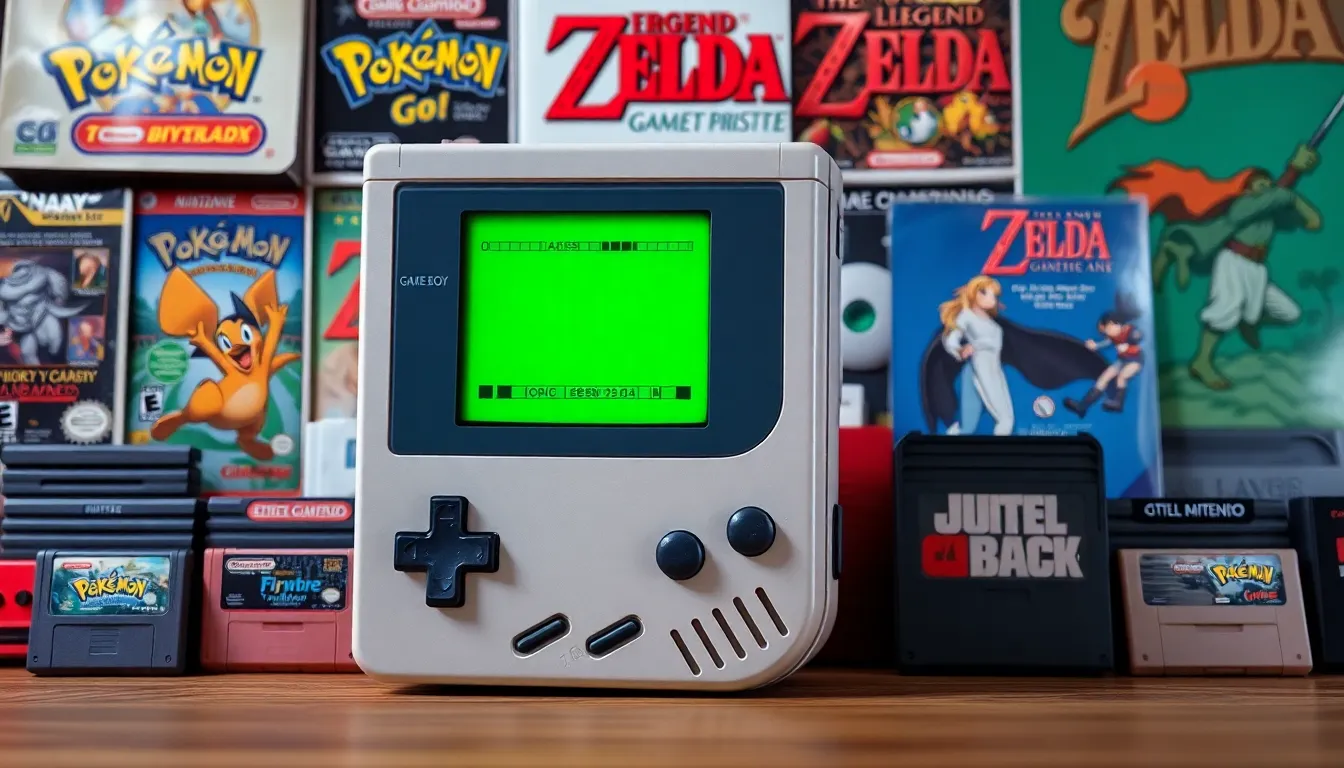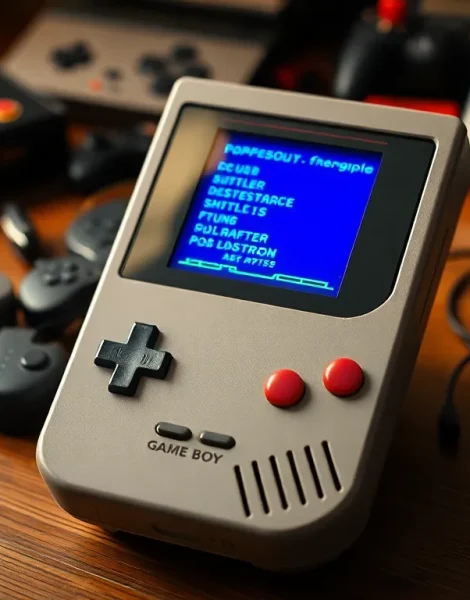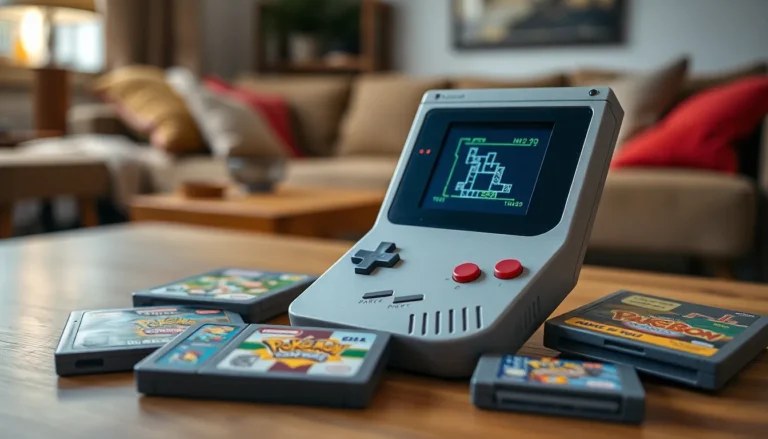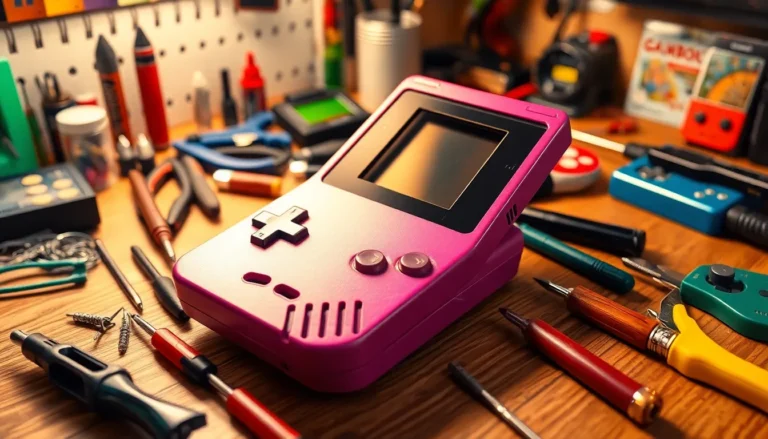Imagine diving back into the pixelated world of the Game Boy, but this time, you’ve got the keys to the kingdom. The Game Boy debug mode isn’t just a nostalgic trip down memory lane; it’s a treasure chest filled with secrets that can elevate gameplay to a whole new level. From unlocking hidden features to tweaking game mechanics, this hidden gem offers a playground for both casual players and hardcore enthusiasts.
Whether you’re looking to breeze through that notoriously tough level or simply want to impress your friends with your insider knowledge, mastering debug mode is your ticket to gaming glory. So grab your trusty Game Boy, dust off those cartridges, and prepare to unleash a world of possibilities that’ll leave you laughing and wondering why you didn’t dive into this sooner. After all, who wouldn’t want to be the ultimate Game Boy wizard?
Table of Contents
ToggleOverview of Game Boy Debug Mode
Game Boy debug mode serves as a powerful feature embedded within select titles. This mode enables players to access various hidden functions that enhance the overall gaming experience. Unlocking debug mode often involves specific button combinations at the title screen or using cheat devices.
Many developers originally designed it for testing purposes during game development. Players can amend game variables, such as character attributes, enemy behaviors, and level layouts. Debug mode brings flexibility, allowing players to experiment with different game mechanics and outcomes.
Game Boy titles often contain a rich history tied to their debug modes. Certain games, like “Pokémon Red/Blue,” utilize this mode to help testers iteratively refine gameplay before official releases. Embracing debug mode often reveals secrets, easter eggs, or even unfinished content, giving players unique insights into development processes.
Using debug mode expands playability significantly. Players can jump to any level, spawn items, or adjust difficulty settings at will. These features particularly appeal to speedrunners or gamers seeking to master every aspect of their favorite games.
While not all Game Boy games feature this mode, those that do often come with an array of fascinating possibilities. The legacy of debug mode continues to resonate within the gaming community, encouraging exploration and creativity among players, whether casual or dedicated.
History of Game Boy Debug Mode

Debug mode on the Game Boy emerged as a fascinating resource for both developers and players alike. This feature, initially designed for testing purposes, allowed developers to identify and fix issues during the game creation process.
Development Insights
In the early stages of Game Boy development, debug modes provided essential tools. Developers leveraged these modes to analyze gameplay mechanics and improve overall performance. Testers could manipulate character attributes and enemy behaviors, ensuring smoother experiences in the final product. Debug modes facilitated rapid iteration on game design elements, which enabled teams to test features more effectively thereby enhancing polished releases. As gaming technology evolved, debug functions found their way into various titles, allowing developers to create engaging gameplay dynamics.
Early Usage Examples
Some notable early examples of debug mode include “Pokémon Red/Blue” and “The Legend of Zelda: Link’s Awakening.” In “Pokémon,” players accessed the debug mode through simple button combinations, revealing hidden Pokémon and level layouts. “The Legend of Zelda” allowed users to manipulate items and explore dungeons effortlessly. These features not only enriched player experiences but also provided insights into game development processes. Games that included debug mode inspired players, encouraging them to experiment and uncover secrets.
How to Access Game Boy Debug Mode
Accessing Game Boy debug mode involves using specific tools and following precise steps. Players can unlock hidden features, enhancing their gaming experience.
Tools Required
To access debug mode, players need certain tools. A Game Boy console or emulator acts as the primary device. Additionally, players may require cheat cartridges or Game Shark if using original hardware. For emulators, built-in cheat functions streamline the process. These tools help gamers access debug functionalities in select games.
Step-by-Step Instructions
Start by powering on the Game Boy or emulator. Next, insert the game intended for debug mode. Then, input the specific button combination. Popular combinations include pressing Select, Start, and specific directional buttons simultaneously. Each game may have unique combinations to activate debug mode. After the combination, a debug menu or mode usually appears. Review the options available to modify game settings and explore the unlocked features.
Features of Game Boy Debug Mode
Game Boy debug mode offers various tools and options for enhancing gameplay experiences. Players can explore unique features that provide deeper insights into game mechanics.
Visual Debugging Tools
Visual debugging tools enable players to see essential game elements. They can inspect sprite graphics, backgrounds, and collision detection, all in real-time. Using these tools, users identify visual glitches and adjust presentation styles. The ability to modify screen colors enhances customization, allowing for a personalized gaming aesthetic. Some games feature maps to navigate levels easily and pinpoint problems. Rapid iteration becomes possible since players can instantly observe changes, leading to improved gameplay.
Audio and Performance Analysis
Audio analysis tools assist users in monitoring sound effects and music tracks. Players can adjust volume levels for better balance between game sounds. These tools also uncover hidden audio cues or tracks not available in the regular gameplay. Performance analysis reveals frame rates and loading times, enhancing overall efficiency. Observing how games respond under various conditions offers insights into optimizations. Results from this analysis aid players in understanding hardware limitations, leading to a more stable experience throughout gameplay sessions.
Applications of Game Boy Debug Mode
Game Boy debug mode serves multiple applications, benefiting both game development and the hacking community.
Game Development
Debug mode aids game developers in fine-tuning their projects. This feature allows testing of various elements like gameplay mechanics and graphics. Developers utilize it to spot bugs and performance issues, modifying aspects in real-time. Testing levels and character interactions becomes more efficient. Titles such as “Pokémon Red/Blue” and “The Legend of Zelda” saw improvements thanks to debug functions. Accessing hidden tools, developers adjust parameters to refine player experience. Debug modes often result in smoother gameplay, highlighting the importance of this essential component.
Hacking and Modding
Hacking and modding communities leverage debug mode for extensive customization. Players uncover hidden features and access new content through this tool. Common actions include altering character stats or reprogramming enemy behaviors. Players typically use cheat devices to access debug mode, amplifying the gaming experience. Some enthusiasts create mods that extend gameplay, adding new items or levels with ease. Innovative modifications often lead to unique gaming scenarios, enhancing replay value. The collaborative spirit within the community thrives, as shared knowledge encourages creativity and exploration.
Embracing Game Boy debug mode opens up a world of possibilities for gamers seeking to enhance their experience. This hidden feature not only allows players to uncover secrets and modify gameplay but also fosters a deeper understanding of game mechanics. With the right tools and knowledge, anyone can access this powerful mode and elevate their skills.
As players explore the intricacies of debug mode, they’ll find that it enriches their gameplay and encourages creativity. Whether it’s for nostalgia or the thrill of mastering a game, debug mode remains a valuable asset in the gaming community. By tapping into its potential, players can truly unlock the magic of their favorite Game Boy titles.









